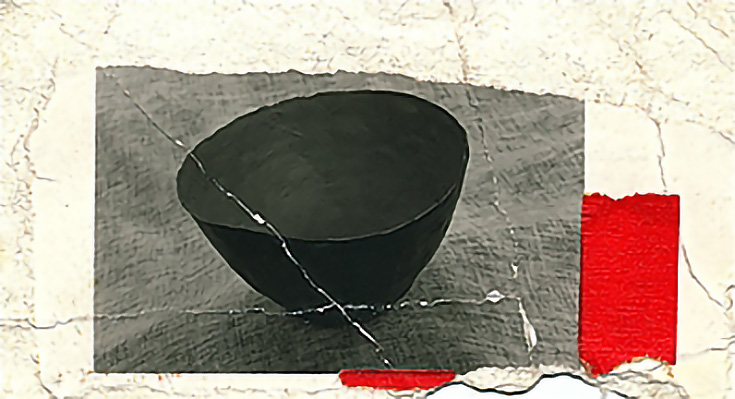Avant-garde photographer Tommy Hawk Appleby lives a thoughtful, art-centric life, creating beautifully layered artwork referencing his past artwork, the cities where he’s lived (including Paris, for a year and three months) and the rich world of visual detail and artistic possibilities that exists around all of us.
When you dive into Tommy’s photographic methods, you’ll find a process that is as many-layered as his final pieces. He typically starts by photographing a personally symbolic object, then develops those photographs and returns to the same location to photograph that photograph—replacing the original object to create a sensation of the passage of time, displacement, or the change of seasons.
In many cases he also collages newer photos with his older work and photographs the entire ensemble. This re-imagining (and re-use) of his earlier work creates an ongoing, evolving timeline of art that is truly fascinating—and very unique to him.
Take this three-dimensional bowl made out of paper and tape, for example. He first photographed it, then collaged that photo into new artwork, and photographed again.
A judicial application of color, in contrast with the stark black and white of the original photograph, adds a sense of age and importance to the dark paper bowl—which should be an inherently ephemeral item, but somehow, is not.
Tommy explained that this next photograph was originally taken of an old movie theater’s ceiling—which was eventually destroyed—and is just one of several works that reference the same ceiling and its temporary existence.
In this photograph, he added a two-dimensional design (a bowl motif, as you can see) over the top of the celing’s carved figure, having first tinted the entire photograph in a golden hue, lending a shimmering richness to its classically inspired figures.
Lastly, Difficulty with Diffusion #1 is an eye-catching photographic print with a fascinating story. Most of us take for granted the way that our eyes work, sending two separate images to the brain which are then combined to give us a sense of depth and three-dimensionality.
Tommy learned late in life that his eyesight is a bit different. Instead of seeing a single object, he often sees two slightly overlapping objects—giving him a very unique view on the world. I love how we get to see through his eyes, just a little bit, with the depiction of the Ford Mustang above.
Every single time I look at Tommy’s website, I’m pulled into his world of creativity. The body of work he’s assembled (and saved) over the length of his career is staggering, and a joy to peruse. I encourage you to take a few moments to visit his website yourself—you’ll be glad you did!
This post may contain affiliate links.



